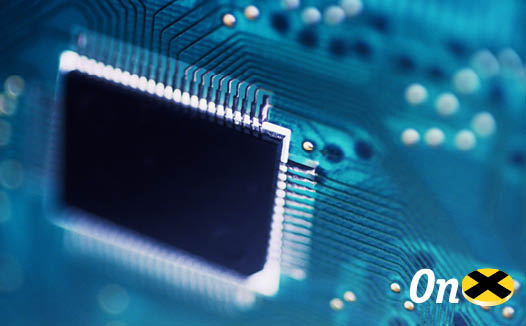
Mike Janson is the Principal Architect of the CTO Strategy Group at OnX Enterprise Solutions.
Over the past few years, the scalability and capability of storage has continued to expand. While storage technology hasn’t quite been on par with processor technology (in terms of Moore’s law), there still seems to be no end in sight for this trend.
So, what exactly has led to the recent surge in enhanced storage technologies? The answer is simple! As users, we have an insatiable appetite for data. Whether we’re dealing with enterprise and machine-generated data or images and videos posted on social media, storing this data in a safe and secure manner has become more of a challenge.
Spinning Media vs. Solid State Drives
In order to address this issue, the size of disk drives has continued to grow for both spinning media and the newer solid state devices. Although spinning media is significantly slower than its solid state counterpart, it has grown to single drive capacities of 10 TB. At the same time, we have also seen the release of 3.8 TB solid state drives.
You may be wondering what distinguishes spinning media from solid state disks. Performance metrics and cost are the two key differentiators for these types of drives. When it comes to pricing, solid state drives have a long way to go to be on par with spinning media.
The Growing Scalability of Storage Arrays
Today, multiple manufacturers are packaging these drives in storage arrays. The scale of these arrays continues to grow, and on average, it doubles every 2 to 3 years. This scalability increase applies to both the size and number of drives that these arrays can house and many manufacturers are providing arrays that will scale to multi-petabyte implementations.
Enhancements in the speed and capability of today’s processor technology have played a large role in the growing scalability of storage arrays. The processors that have enabled this scalability also provide the ability to add software enhancements, which can be used to manage storage more effectively and determine how data is being processed.
For example, when disk drive technology is mixed with intelligent tiering software, this allows a single array to use both types of drives and move the data to the drive type (or tier) of storage. In turn, this provides the level of performance required for the application using the data. Many newer arrays are also using data deduplication and data compression techniques in order to store more data on the same drives.
The Future of Storage Consolidation
Since this technology continues to advance at monumental speeds, data center managers are now able to better consolidate their current storage environment. Several years ago, data centers were bombarded by multiple arrays on their floor space. Now, they can get by using only one or two arrays, which require less power and cooling.
Array manufacturers have also created software with the ability to migrate data from one array to another. Applications are still capable of accessing the data, and in most cases, this can be done between storage arrays from different manufacturers.
Here at OnX, we have had tremendous success working with our customers who have older HP EVA storage technology. In order to consolidate and migrate their data to HP’s newer 3PAR platform, we use HP’s 3PAR Peer Motion software, which enables a seamless transfer of data from the older EVAs to the new 3PAR.
This type of consolidation and migration has resulted in a decreased footprint for data centers. Overall storage capacity and performance has increased, and power and cooling requirements have dropped as a result. Lastly, the number of man hours required for managing storage environments has also decreased.
What are your thoughts on storage consolidation? Feel free to share your questions or feedback about this post.
















